Learning how to grow lettuce at home means fresh salad at your fingertips. With so many varieties to choose from — curly, ruffled, red, spotted — you can serve a different kind every night of the week.
Bok choy is another delicious garden green you may want to add to your garden!
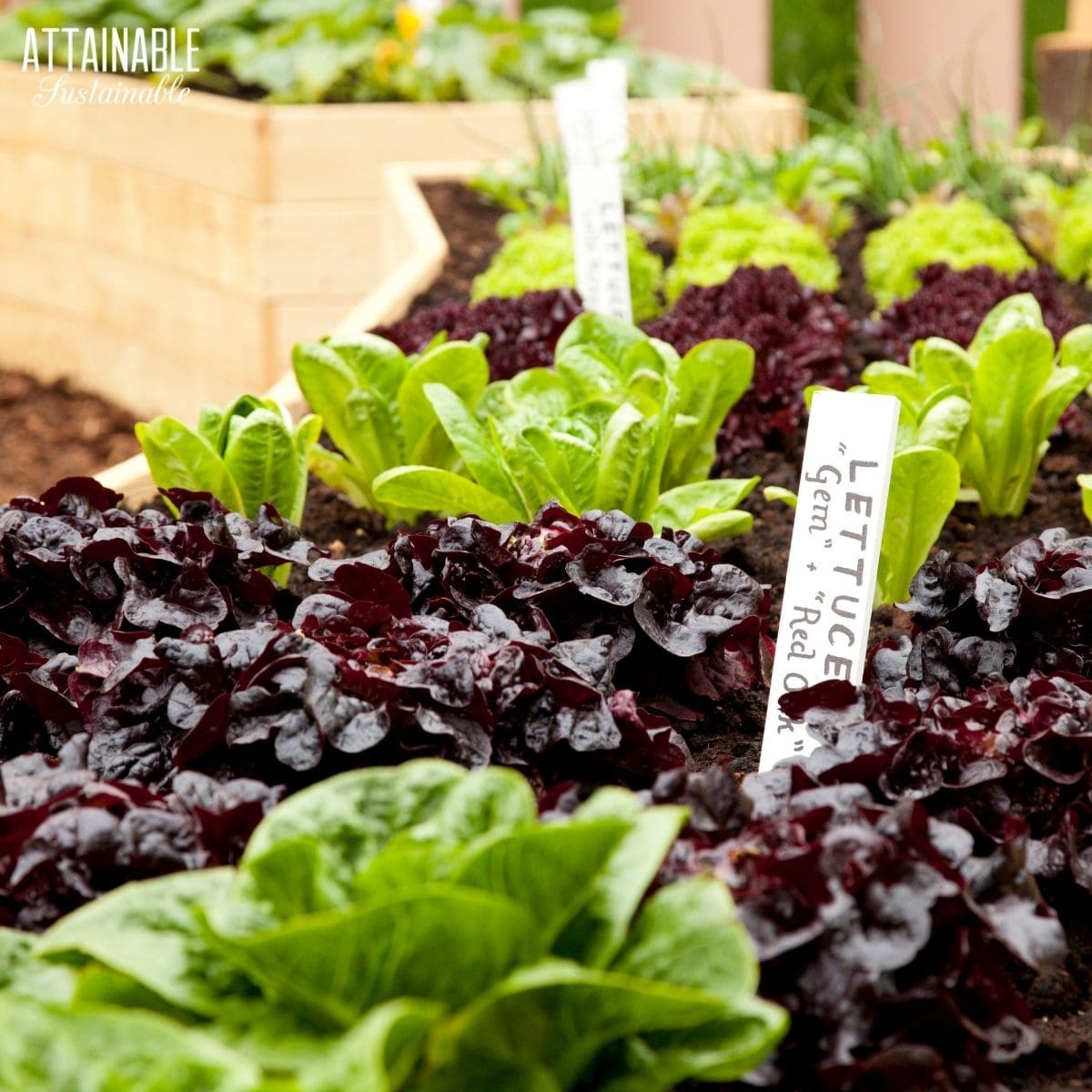
All About Growing Lettuce at Home
Lettuce is known for being easy to grow and works in any size home garden. You can even grow it in containers or in decorative garden beds. Lettuce is also the perfect cool weather crop ̶ if you have long, cool springs and falls in your region, lettuce is the ideal vegetable for your garden. And nothing beats the flavor of fresh-picked lettuce. If you’ve never enjoyed truly fresh lettuce, you’re in for a treat!
There are many types of lettuce to grow, so be sure to grow an assortment. Most types of lettuce need similar care, but there are some key differences (including texture and flavor) that can help you decide which varieties to plant in your home garden.
Cos Lettuce (Romaine)
Cos lettuce is the variety of Romaine lettuce most of us know and love. With its crisp flavor and dark leaves, it makes the perfect lettuce for salad or sandwiches.
Grow Some Greens!
Ready to grow fresh greens, no matter WHERE you live? Sign up for my
FREE quick-start guide and start growing some of your own food!
- When to Plant: Early spring (March or as soon as soil is workable).
- Time to Harvest: 70-75 days
- Growing Tips: Cos lettuce needs well-drained soil, with full sun (or partial shade in warmer months).
Head Lettuce
Iceberg is probably the most familiar variety of head lettuce, named for its round ball-like shape. The leaves are crisp and juicy, but nearly flavorless. Head lettuce adds the perfect crunch to salads and sandwiches.
- When to Plant: Mid to late spring (April and May)
- Time to Harvest: 50-75 days
- Growing Tips: Head lettuce needs well-drained soil and full sun, except in the peak of summer when it may need partial shade.
Bibb Lettuce
Bibb lettuce is a variety of butter lettuce, known for its “buttery” flavor and smooth texture. Bibb is also more heat tolerant than other lettuce varieties, making it perfect for late spring planting. The heads of Bibb lettuce are loosely shaped, making it easy to harvest leaves as they grow. Its leaves are a dark green with dark red edges that make it particularly appealing for salads and wraps.
- When to Plant: Early to late spring (March-May)
- Time to Harvest: 55-60 days
- Growing Tips: Bibb lettuce prefers well-drained soil and full sun (or partial shade in hot climates). Bibb lettuce heads are smaller than other varieties and can be planted closer together.
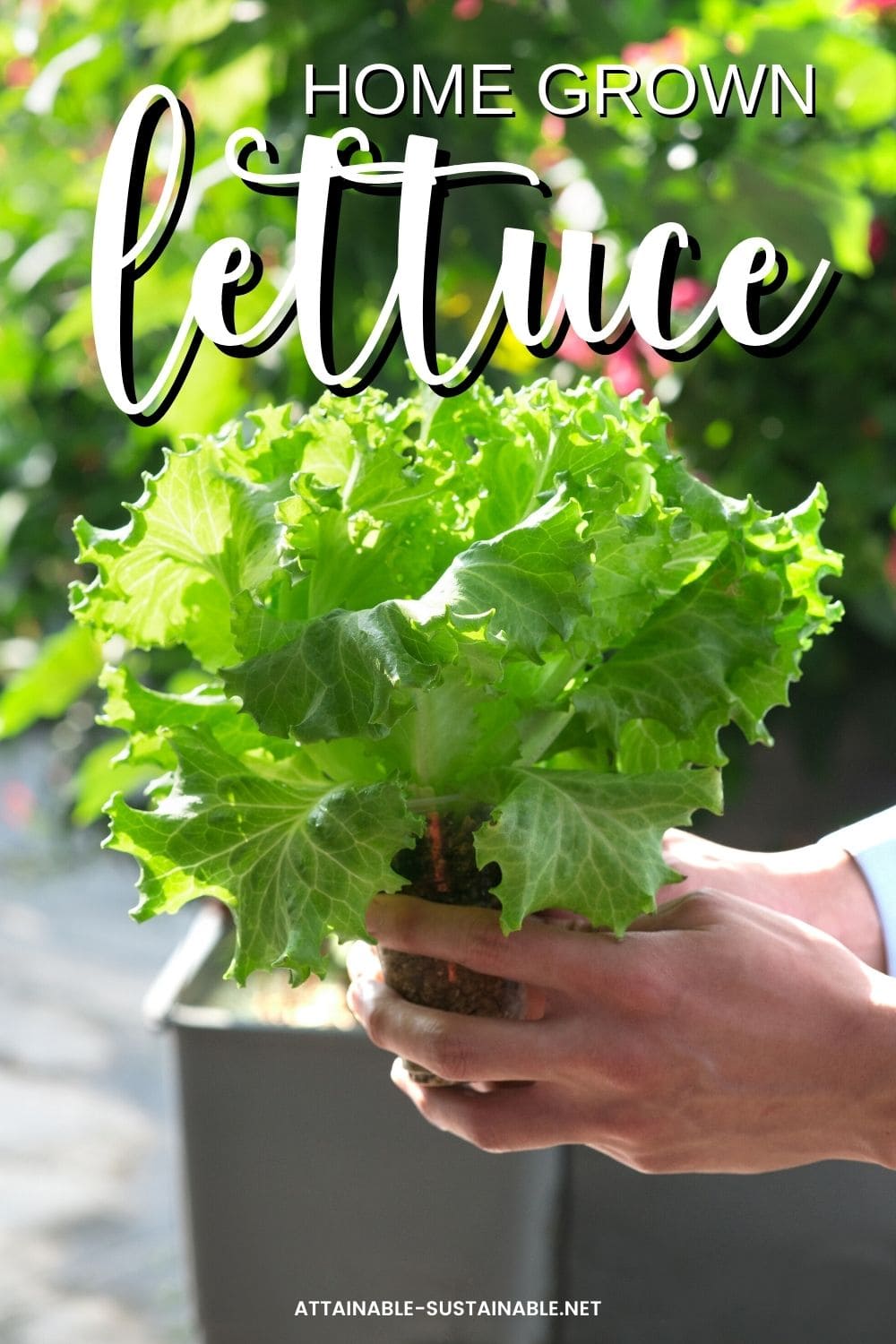
Red leaf lettuce is a loose leaf lettuce known for its rusty red color. Its leaves are tender and delicate, perfect for adding variety to a salad.
- When to Plant: Early spring (March)
- Time to Harvest: 45-55 days
- Growing Tips: Red leaf lettuce does not tolerate excessive heat. It may tolerate full sun in the early spring, but when it gets warm, red leaf does better in partial shade.
Buttercruch Lettuce
Buttercrunch lettuce is another variety of butter lettuce with a rich flavor and tender leaves. It’s one of the most heat tolerant lettuces, so you can grow buttercrunch when its too warm for other varieties. Buttercrunch is exceptionally tender, making it an excellent choice for wraps and salads.
- When to Plant: Early to late spring (March-May)
- Time to Harvest: 55-65 days
- Growing Tips: Buttercrunch lettuce prefers well-drained soil and full sun (or partial shade in hot climates).
 How to Plant Lettuce
How to Plant Lettuce
Start seedlings indoors, two weeks ahead of the last frost, planting lettuce seeds about one inch apart with only a light covering of soil so they get plenty of sunlight.
If you’re planting seeds directly in the garden, wait to plant until the threat of frost has passed and soil temperatures are between 55-65 degrees.
New to gardening? Limited on space? The 5-Gallon Garden gives you the skills you need to grow food in the space you have. Get started with your garden today!
Lettuce can be planted from seeds or transplants. Spring and fall are both considered the perfect growing season for lettuce. Lettuce grows best in cooler temperatures and doesn’t like the heat of summer.
Transplant to the vegetable garden when soil is workable, about 10-14 days after planting, or when plants have 4-6 mature leaves.
Time fall plantings to mature right before the first frost (about 6-10 weeks ahead of time). Seedlings can tolerate a slight freeze in the spring, but mature plants cannot and need to be harvested before it gets too cold.
When transplanting into the garden, space plants 8-12 inches apart (depending on variety). Consider growing lettuce in succession every week or two to maintain a steady supply of fresh lettuce all spring, summer, and fall.
How Long Does it Take for Lettuce to Grow?
The days to harvest mentioned above varies from variety to variety, but that number is based on harvesting a mature head of lettuce. If you’re growing leaf lettuce varieties, you’ll be able to start harvesting individual leaves from the plants as baby lettuce just a couple of weeks after planting. Another week or so and you’ll be harvesting full sized leaves.
Requirements for Growing Lettuce
Light requirements
Plant in full sun except in the hottest months, when partial shade or an east-facing garden space can protect plants from the heat.
Soil requirements
Lettuce prefers loose, well-drained, compost-rich soil. It has a shallow root system, making it ideal for container gardening. When transplanting, work compost into the soil.
Water requirements
For the best flavor and texture, keep the soil around lettuce plants consistently moist.
Pests and Other Problems
Tender green lettuce leaves are very susceptible to damage from slugs and snails. They’re also a favorite of pests like rabbits and deer.
Plant garlic or chives near lettuce to prevent aphids.
Row covers can be incredibly useful when growing lettuce. It protects young plants from the cold, discourages pests, and protects plants from the hot sun in the summer months.
 Growing Lettuce in Containers
Growing Lettuce in Containers
With its shallow roots, lettuce is an ideal candidate for growing in container gardens. Growing lettuce in hanging baskets can help combat crawling pests like slugs and snails. Choose a container that is a minimum of 4″ deep and fill it with good quality potting soil.
Harvesting Lettuce from Your Garden
Harvest lettuce in the early morning, before the midday sun. This prevents the leaves from wilting prematurely.
Many varieties of lettuce can be harvested as microgreens. Harvest microgreens around two weeks after germination, when plants are 3-4 inches tall. If lettuce is planted closely together and you need to thin it, these, too, can be harvested as microgreens.
Instead of cutting the head from the stalk as you do when harvesting head lettuce (thus ending the fresh salads), you can harvest leaf lettuce varieties one leaf at a time. You can harvest romaine lettuce and butter lettuce in this manner as well.
Using Lettuce in the Kitchen
Lettuce is the base of every good salad, of course, but it’s great for making low-carb meals like these turkey lettuce wraps and it’s an easy veggies to sneak into homemade smoothies.
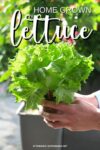
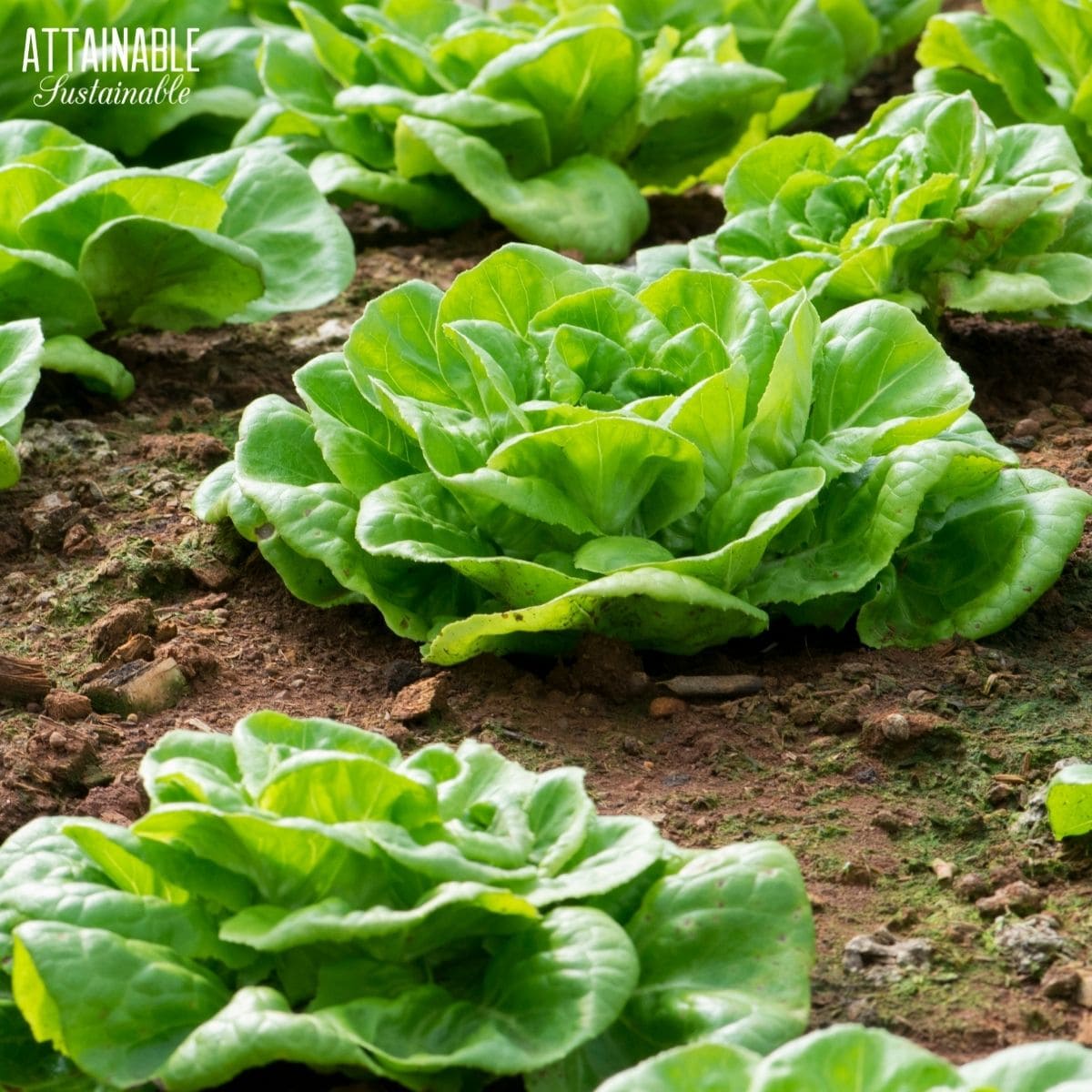 How to Plant Lettuce
How to Plant Lettuce 
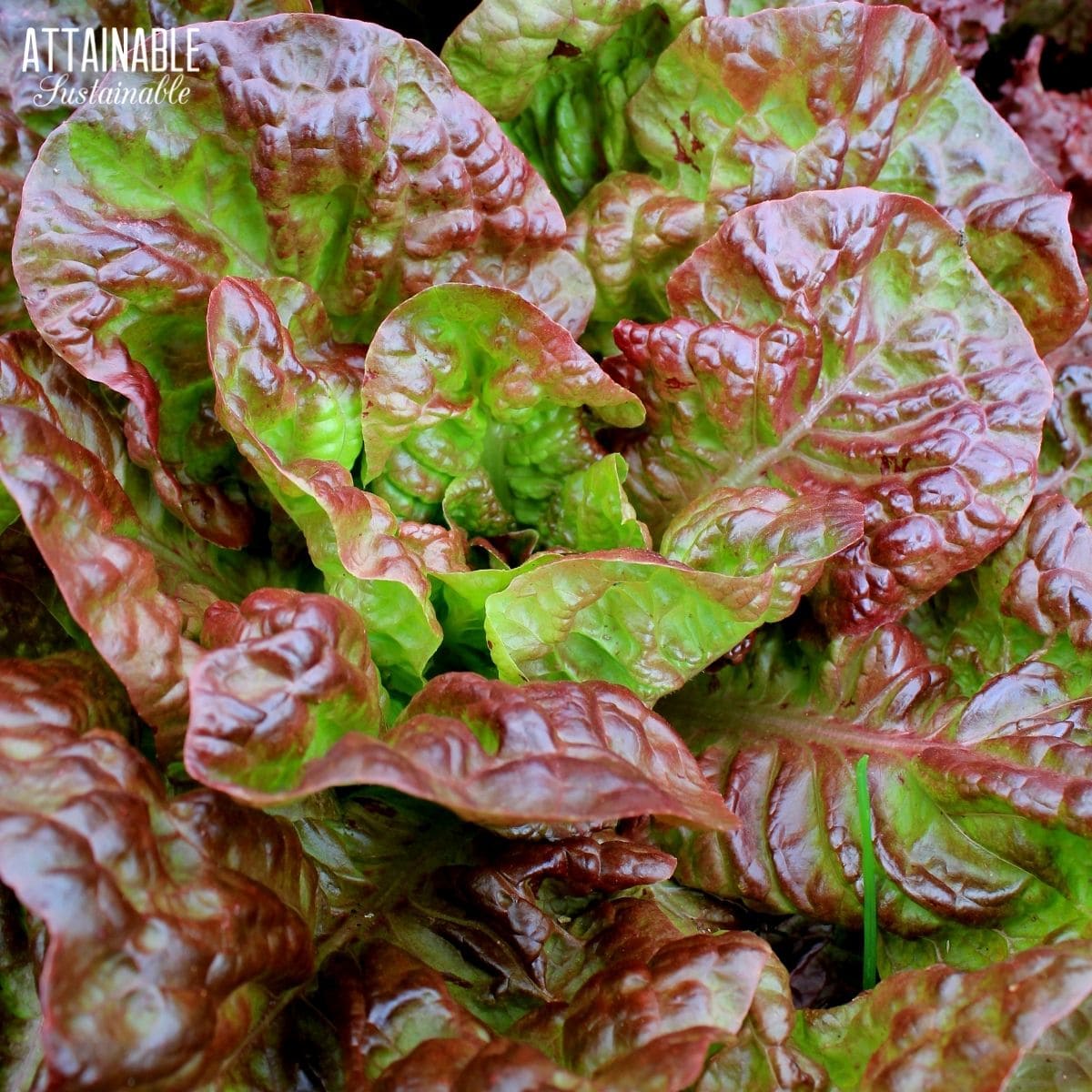
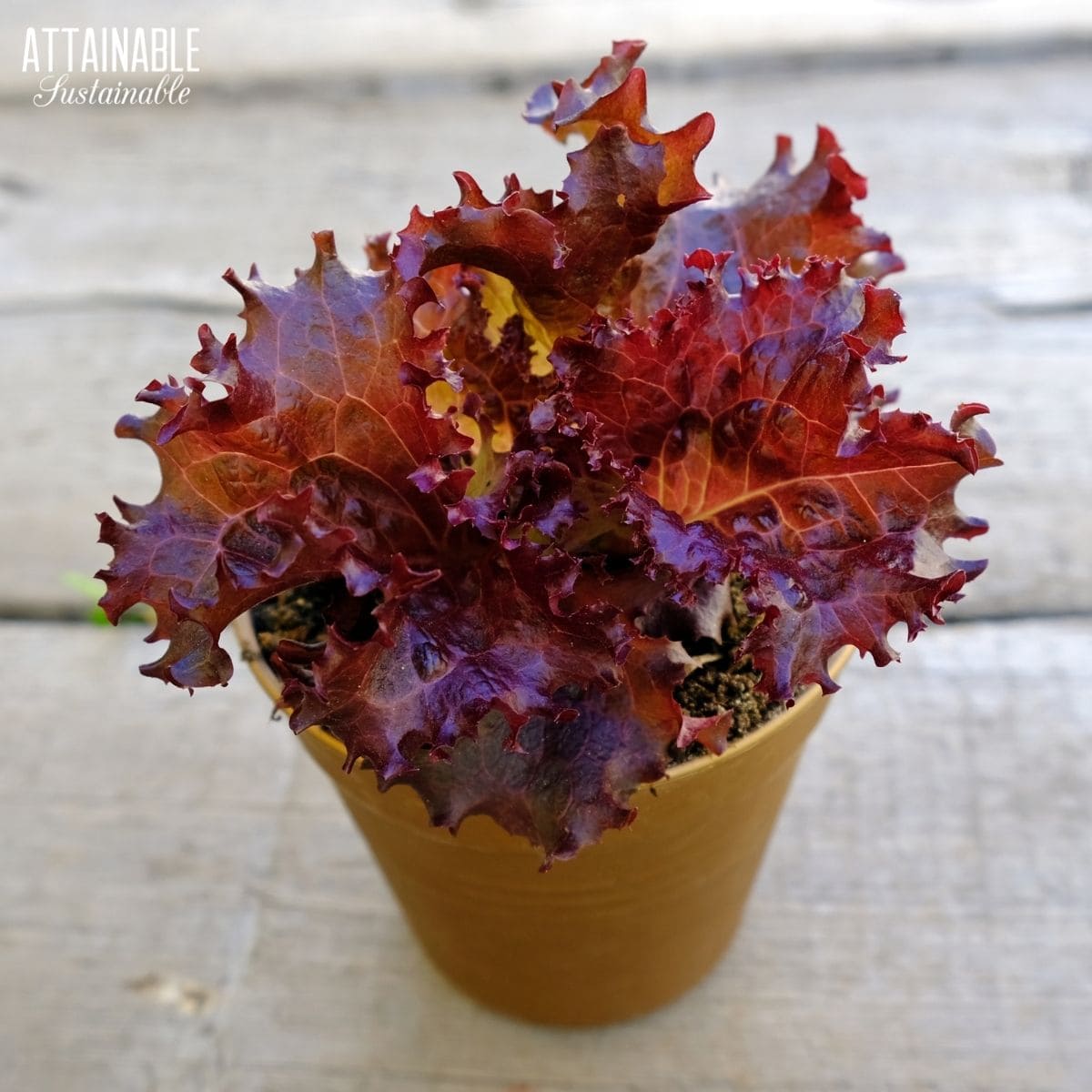 Growing Lettuce in Containers
Growing Lettuce in Containers




I love your site!!!
Thank you! 🙂